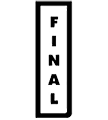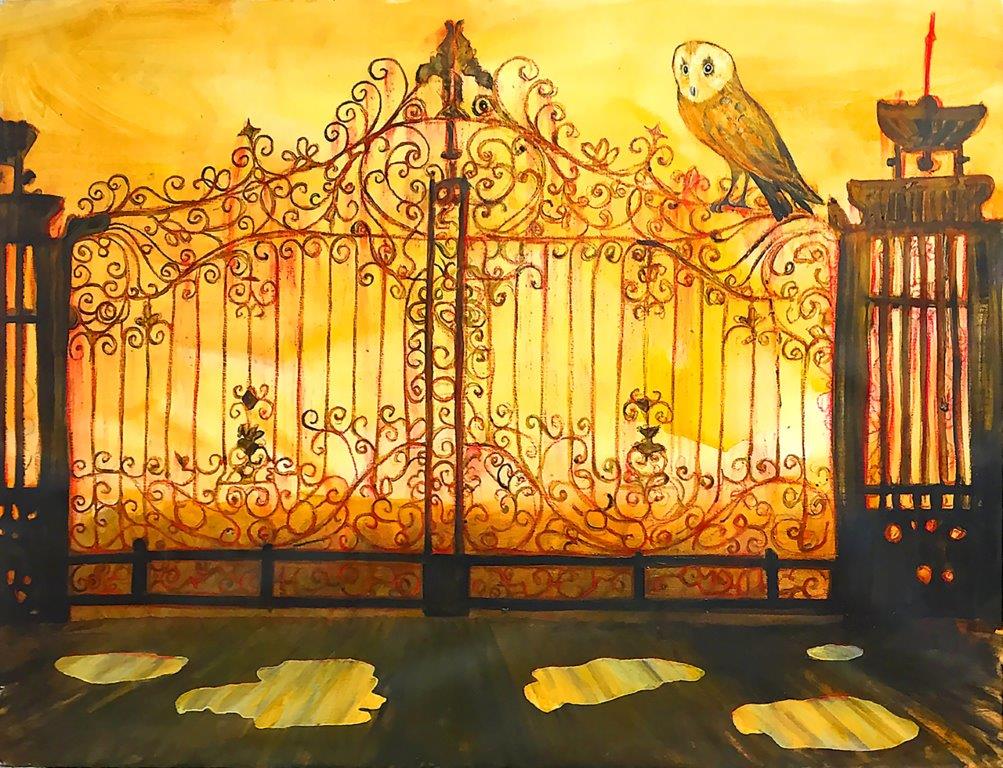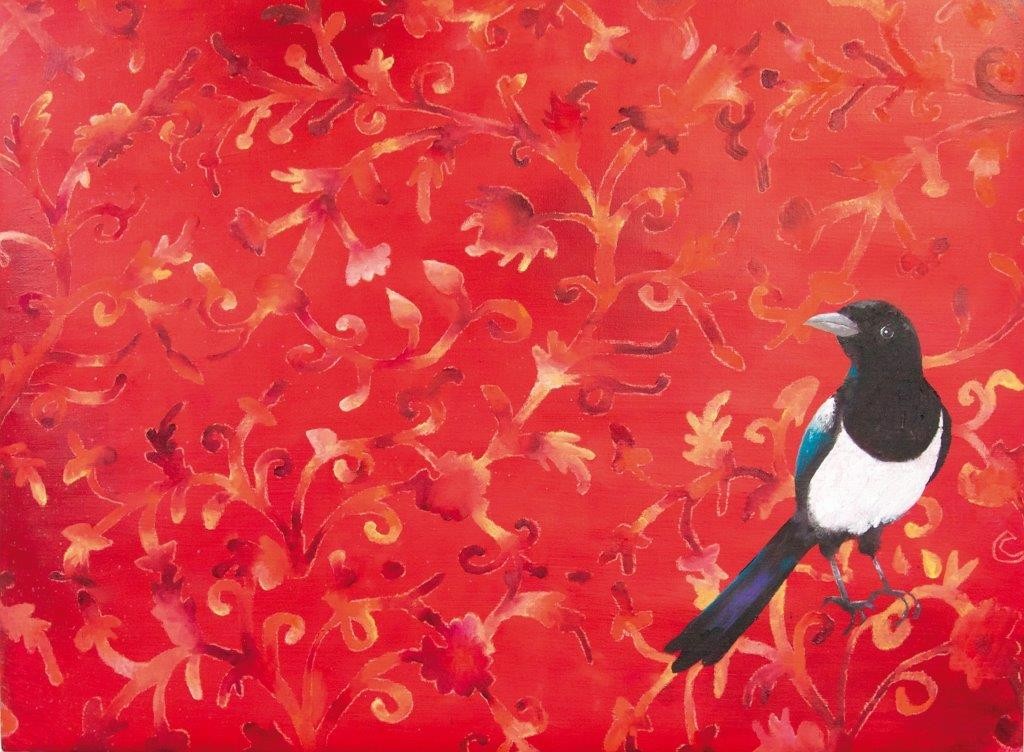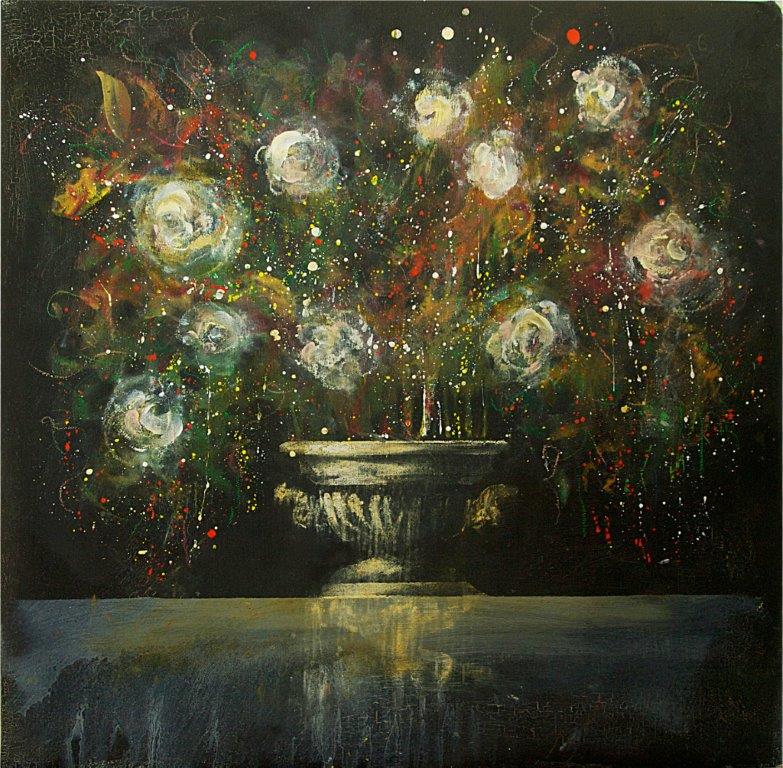20 October – 13 November 2016
JOHAN PETTERSON
After five years, Johan Petterson is now back at Galleri Final with a series of New Paintings. On the one hand, they focus on flowers, and on the other, they focus on birds and frogs. This is a new and different world in Johan Petterson’s universe, where human beings, who are often part of his artistic properties, are not welcome. The flowers greet us in their still life composition of artistically moulded garden urns, filled with airy bouquets. At times they conjure up images of flaming roses, but most often they seem to be gathered from an imaginary flora. Linnaeus would have been amazed, but on the other hand – and as Johan Petterson has also asked himself – what do flowers care about their names in Latin? In floral bouquets, everything is a dance between colors and forms (underlined by the balanced encounters between acrylic and oil) as well as variations in textures and shades where names and even species are indifferent.
In these paintings, created as variations on the Flora theme, the brush strokes are rapid, the shapes are implied rather than clearly stated and the colors are carried out by a luminous intensity when they stand out against the backdrops, neutrally maintained in black or gray. In the larger flower paintings, little birds can be found, most often tree sparrows, making their way into the picture, creating a link to the exhibitions’ other dominant motifs: birds from the Nordic fauna. As seen in the Flora paintings, Johan Petterson quite deliberately builds a bridge to 16th century Netherlands, the classical period of big floral compositions. To connect tradition to his art is a typical way for Johan Petterson to work. Not because he believes that “it was better before”, but because tradition is highly useful in looking forward to the future. In true post-modernism spirit, he does not attempt to build walls between “now” and “then”. On the contrary, he wants to preserve, renew and create ways into the future. And that does not only concern his updated floral still lifes, where he seems to capture the fleeting moment in flight. This applies equally to both the landscape and animal paintings, as well as those genres that stem from 16th century Dutch art.
But in Johan Petterson’s studio in Stockholm, landscapes as well as groves of trees and shrubberies sometimes transform into ornamental “no-mans lands” where magpies rest and blackbirds sing on silent summer nights and where small birds play hide-and-seek among the twigs and the majestic necks of white swans materialize out of the black water of a forest lake. When drawn out of their natural environments, we are forced to look at them with new eyes, to experience them as guests in a world that is becoming more and more urban. An owl, who could have been taken from a work of Hieronymus Bosch, sits on a closed gate, a border between two worlds that Johan Petterson leaves to us to define. And the owl, in turn, looks at us with eyes that no longer can be surprised or amazed. In Johan Petterson’s art, the owl acts as a messenger between different realities. A surrealistic trace that is even more accentuated in the painting entitled Mitt i Malmö (In the Middle of Malmö). A title that confuses since there is no connection to Malmö in the painting at all. It depicts a frog – a Scania tree frog, but it can also be a bewitched prince or a princess awaiting that liberating kiss. In Mitt i Malmö , the frog sits on an opalescent circular disk, an oversized dewdrop in the ornamental no-mans land – or is it on a full moon in a distant galaxy? Like the owl, the frog raises many questions, but once again Johan Petterson leaves it to us to find the answers.
Britte Montigny















